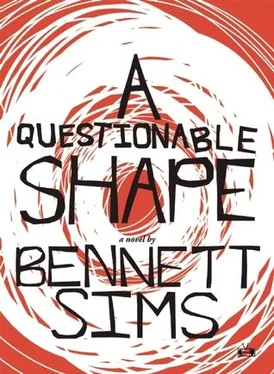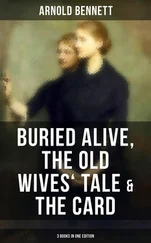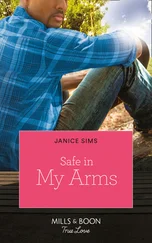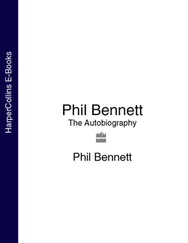Matt’s response distressed me at the time, and not only because it allowed him — by capitalizing on my distraction — to take my pawn. Rather, I found his dogmatism in the debate unsettling. No matter what, he refused to believe that the undead were conscious. 13This seemed like the secular equivalent of denying that they had souls — a dualist way of dehumanizing them — and it made me wonder how far he would go in denying their subjectivity. Such questions interested me precisely until he announced ‘Checkmate,’ at which point I did my best to push these thoughts out of mind. But as I sit here now (rubbing my closed lids, massaging phosphenes into my eyeballs), it has begun to bother me all over again.
‘Hey,’ I say, opening my eyes. Matt is reaching for his knight when he looks up at me. ‘What did you mean by “all dark inside”? How do you even visualize it?’
I half-expect him to quote Chalmers, or, knowing Matt, to quote Homer or Milton or some other blind poet. But after a moment he responds that what he always visualizes — what the blindness of undeath reminds him of — are the black graphics in videogames. ‘Like kill screens,’ he says, ‘when a character dies. Or like the sidewalls of a platformer, the boundary lines you can’t cross.’ In videogames, he explains, this darkness signifies death, or the void, or the unknowable, and it always has the same unnerving texture: completely flat and black, without depth. ‘That’s what I mean when I say “all dark inside,”’ he says.
Again I want to ask him about Mr. Mazoch — whether he thinks of his father this way, as nothing more than a brain-dead game-over screen — but what I hear myself asking instead is what games he has in mind. ‘ Goldeneye ,’ he says. Whenever he lies in bed at night, and tries to imagine the advance of the epidemic (how far and fast its blindness’s vectors are spreading; how that darkness is encroaching on the globe), he says that he pictures it as a worldwide game of Goldeneye . When four people play this first-person shooter at once, the television has to be divided into quadrants, mini-screens that accommodate each character’s point of view. Once a player is shot dead, his POV runs red with blood before shutting darkly off. And while the other three quadrants continue to televise the POV of their respective players (framing the rifles or Moonraker Lasers in their hands, the corridors they’re jogging down), there remains in one corner of the TV this black box, the kill screen, where the dead player’s eyes have closed. With each character who dies, obviously, another quadrant winks out. ‘That’s what I always think of at night,’ Matt says. He visualizes the epidemic as a global agglomeration of kill screens. Because if there were billions more players, he says — if you multiplied the mini-screens a billionfold — the TV would eventually be honeycombed with these black cells. Assuming that all the POV in the world were arranged on an analogous master screen, with ‘live feeds’ televising mortal sightlines and ‘kill screens’ representing undeath, a viewer could measure the progress of the epidemic just by watching the cells black out across the grid. The screen would build in blackness like a hive of blindness, he says, until finally — when its entire surface was covered — the visible world would be replaced by this monochrome plane of unseeing.
‘I don’t see it,’ I say. I ask him how this master screen would distinguish undeath from just plain death: wouldn’t these ‘live feeds’ go dark no matter what? No matter whether it was a bullet, or a brain injury, or a bite wound that extinguished them? ‘If you want a videogame to model the epidemic, you need to find a better example.’
‘I’ve thought of that too,’ Matt says. And he confesses that, while lying in bed at night, he has also tried visualizing the epidemic in other ways. He asks me to imagine the scrolling levels from Super Mario Brothers , the ones in which all the scenery onscreen drifts steadily backward, as if on a conveyor belt, forcing Mario to run ever forward, lest the lefthand side of the screen, which swallows the scenery as it goes, swallow him as well. This black limit of the screen, he says, this onrushing apocalyptic line, like a tidal wave of dark water, 14drowning all of the trees and clouds and Goombas that have backslid into the oblivion of the out-of-frame: what could better convey the urgency and inexorability of the infection, the way that it seems to sweep over the land? What could better model the submersion of mortal eyes in the undead depths of phenomenological blackness?
‘Almost anything else,’ I tell him. In truth, I’m horrified that Matt has made even Mario a nightmare for himself. If his model has to be a videogame, why can’t it be Tetris or Bubble Bobble or something? I don’t tell him this, of course. I just find ways of picking apart his model. This so-called scrolling line, for example, which shepherds Mario forward and subsumes everything in its path: it’s too easily confused with time, I say. And besides, if the grid of POV isn’t homogenous enough, a limit that razes everything at once is homogenous to a fault. It’s not our experience of the epidemic that a wall of it barrels down. It actually spreads in pockets, in these widely dispersed, concentrated bursts. Here Matt holds up a finger. For his third and final model for visualizing the epidemic is as ‘pockets’ of blackness, a graphic that he’s borrowed from isometric strategy games like Command and Conquer . At the beginning of every level, he describes, a player’s units are deployed on a map that is shrouded over with black cloud cover, a dense mist that gets referred to, in the game’s instruction manual, as the ‘fog of war.’ This enveloping fog represents at any given moment the epistemological situation of your army: each inch of terrain that hasn’t yet been explored will remain obscured by it, whereas those areas that have been explored will have their share of it burned away, disclosing the pixilated landscape underneath (soils, rocks, trees, rivers, and, eventually, the enemy base). The only way to burn off the fog of war is to send units into the thick of it, their reconnaissance serving to clear a path through its bosky dark. When a player scatters a handful of units radially, out from his base to the edges of the map, each infantryman, jeep, and tank will just bore through the fog, clearing it away in narrow runnels of revealed terrain, which gradually come to vermiculate the larger darkness (on tundra levels these runnels are white, since the pixilated landscape that gets disclosed is snow: as white tendrils branch across the blackness of the map, a vision seems to spill like milk). You could imagine, Mazoch tells me, an inverse epistemological situation, one in which the terrain is already revealed but in which all of the units exude contrails of fog of war: inky clouds that stream backward from jeeps and tanks, obnubilating everything, as if they were cuttlefish propelling themselves across the screen. In this model, the units would represent the undead, and the infection as a whole could be measured by how woven over with blindness the world was. Where they had spread, phenomenological darkness; and in the recesses they hadn’t reached yet, living vision. ‘Can you see it?’ he asks.
I shake my head. This is easily Matt’s most unnerving example yet. ‘The undead don’t spread their infection merely by moving,’ I remind him, ‘by walking across a map as Command and Conquer ’s units do.’ They do so by biting other humans. And whereas the enemy AI in videogames really are mindlessly violent — programmed to attack anything within their radius of awareness — the undead are less predictable. An infected might stagger for hundreds of miles without biting another human, without snuffing out a single mortal POV, and so without exhausting one speck of fog of war. And how is his model supposed to account for that? Do I have a better one, he asks? I consider bringing up Bubble Bobble , then shake my head again. Perhaps it would be best to avoid videogames altogether: the more abstractly Matt thinks about the pandemic, I realize, the less capable he is of individuating the undead. They just become blind tiles on a monolith of mini-screens, or an all-obliterating boundary line, or — as with Command and Conquer —a literal army of darkness. Points on a chart to be wiped out.
Читать дальше












